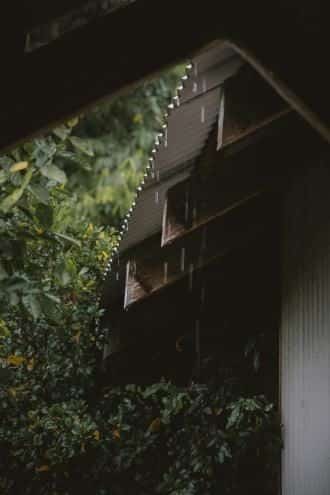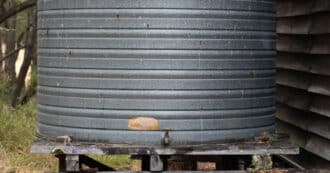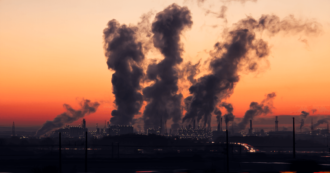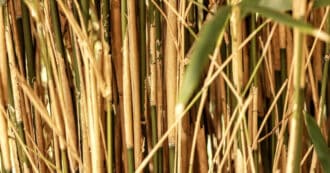By Ilana Stein – There is nothing more fun than drinking clean rainwater! But, can you drink rainwater today?
Many of us may remember standing outside with the rain falling and opening our mouths to catch the drops. But is it safe to drink rain today?
Drinking Rainwater
While it seems like the world has an endless supply of water, only 3% is drinkable freshwater. The water cycle is a closed system, meaning that there is a constant yet limited amount of water in the world, which moves through different phases, from rivers and oceans, evaporation and coalescing to form clouds, before falling as rain. Before the increase in fossil fuels and industrial pollutants, our water supply was clean and it was generally safe to drink rain.
Today, things are a little more complicated: we need to understand what rainwater is, how one collects it, what water quality is and how to make it safe for human consumption so as to augment our water supply.
What is Rainwater?
Rainwater – also written as rain water – is not merely water that falls as rain from the sky. It is water that can be collected and used. It is defined as “rainfall precipitation collected from a roof catchment”.
In other words, rainwater is a source of free water that can be used for various purposes in a perfectly healthy way, such as watering plants, flushing the toilet, laundry, heating and cooling and even drinking – after going through a water filtration system, similar to a coffee filter.
Collecting Rainwater
To collect rainwater is known as rainwater harvesting. When it rains, rainwater is captured and collected by diverting the runoff water from pavements or roofs, and then storing rainwater in rain barrels, tanks, aquifers, wells, or other artificial storage places.
A rain water barrel is a great way to collect and store rainwater.
The Benefits of Rainwater Collection
By making use of rainwater, other water can be conserved and the pressure on the public drinking water supply can be alleviated. “Rainwater harvesting, in conjunction with urban agriculture, would be a viable way to help meet the United Nations Sustainable Development Goals for cleaner and sustainable cities, health and well-being, and food and water security”.
Rainwater Composition
Rainwater is composed of gases such as carbon dioxide, nitrogen and sulphur, and can therefore be quite acidic and low in mineral content. It does not contain dissolved solids and so is rather tasteless. Aside from this, one would think that it is the purest water and that one could safely drink rainwater.
However, as rain makes its way through the atmosphere and then lands on different surfaces or in dirty containers, it picks up harmful bacteria and even heavy metals in areas of chemical plants, thus changing its chemical composition.
Add to this the fact that rainwater pouring off roofs through gutters, particularly for the first time, will have a lot of detritus and heavy particulates – leaves, occasional insect parts or bird poop – and instead of being safe to drink, carry bacteria that can constitute a significant health hazard to the human body.
Today, “we now know that E. coli and other harmful bacteria can be passed along in untreated contaminated water“.
Acid Rainwater
Today, fossil fuels, chemical plants, paper mills, air pollution and the proliferation of toxic chemicals have caused acidic elements such as sulfur dioxide and nitrogen oxide to be emitted into the atmosphere. Here they “react with water, oxygen and other chemicals to form sulfuric and nitric acids. These then mix with water and other materials before falling to the ground” thus creating acid rain (EPA).
Most rain today has some of these chemicals, polluting our rivers, the soil, as well as our collected rainwater. The question is whether it is safe to drink rainwater that has dissolved minerals and chemicals within it.
Is Rainwater Safe To Drink ?
Most rainwater today is therefore not safe to drink, polluted as it is by chemical contaminants, harmful bacteria, and other contaminants. While it can be used for other things such as washing clothes or irrigation in agriculture, it must be treated and tested regularly if we want to drink it too.
There are a number of ways to treat rainwater, so that it is safe for human consumption, such as using sand filters or ultraviolet light.
Many people recommend using a first flush diverter, which “is a simple contraption that diverts the first flow of water away from a rainwater catchment system. The first pass of water in any storm essentially washes your roof of all the sediments that have collected since the last rain. The idea is that diverting the first flush can help ensure cleaner water in your rain tanks or barrels”.
Other methods include a home water filtration pitcher or simply boiling water. But immense care must be taken to ensure that harmful bacteria and other contaminants are removed. Treated water is safe to drink.
Drinking Water – A Priority For The World
According to the United Nations, some two billion people lack safely managed drinking water. A rainwater collection system and treatment methods are vital in order to ensure that rainwater can be safe to drink and perfectly healthy for all humans across the world. This will help to achieve the UN’s Sustainable Development Goal no. 6: “Ensure availability and sustainable management of water and sanitation for all”.
Rainwater and Religion
Terje Oestigaard discusses in an article on CulturallyModified how rain is perceived in different religions. Ancient Israel, the Jewish homeland, is described as “a land of hills and valleys [that] soaks up its water from the rains of heaven” (Deuteronomy 11:11). Jewish tradition adds a prayer for rain during Israel’s rainy season. Ancient Egypt, on the other hand, received most of its water from the annual overflowing of the Nile River.
Being Grateful for Rainwater
Different ways of receiving water can have big influences on a culture. Today, in the western world, tap water pours out with the turn of a faucet – it’s easy to forget that even our water is limited. As water scarcity becomes a larger and larger issue with more drought, forest fires, and acid rain, we must learn to recognize that perfectly safe water doesn’t just magically appear in our homes, but it must be drawn from somewhere, treated and protected.
We tend to drink water – or waste it – without thought or gratitude.
In Islam, the Qur’an states, “Consider the water which you drink. Was it you that brought it down from the rain cloud or We? If We had pleased, We could make it bitter: why then do you not give thanks?” (56:68-70). Recognizing that rainwater comes down from the sky, and not from our own effort is a powerful reminder to be humble and grateful.
We may feel that we’ve mastered nature and have all the water we need on demand, but that is not the case. We must treasure every drop, and make the most of it, for ourselves and those who still lack it, using technology and applied scientific environmental management.
* Featured image source







